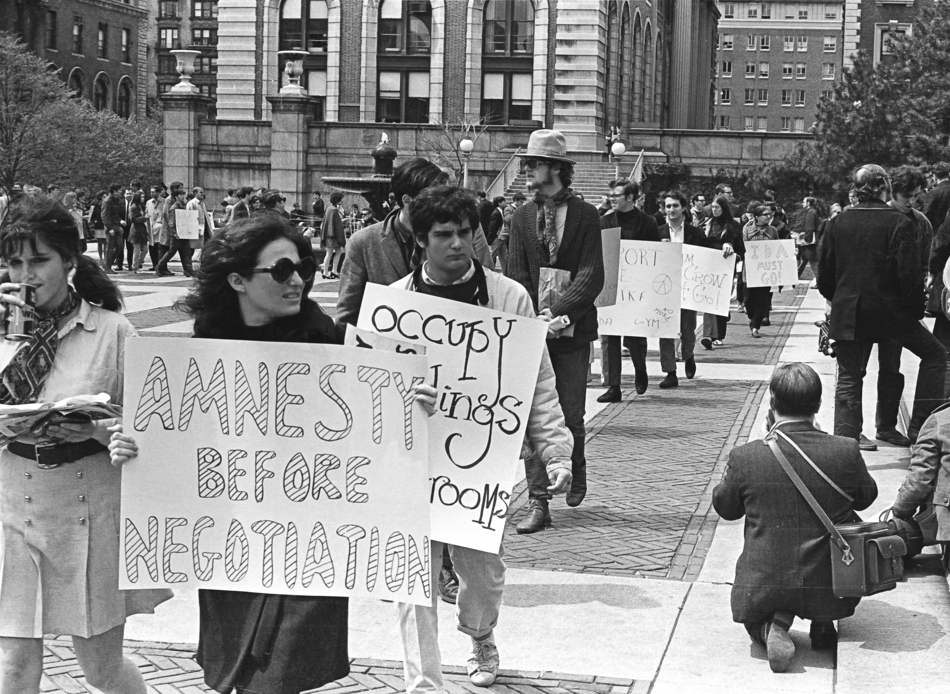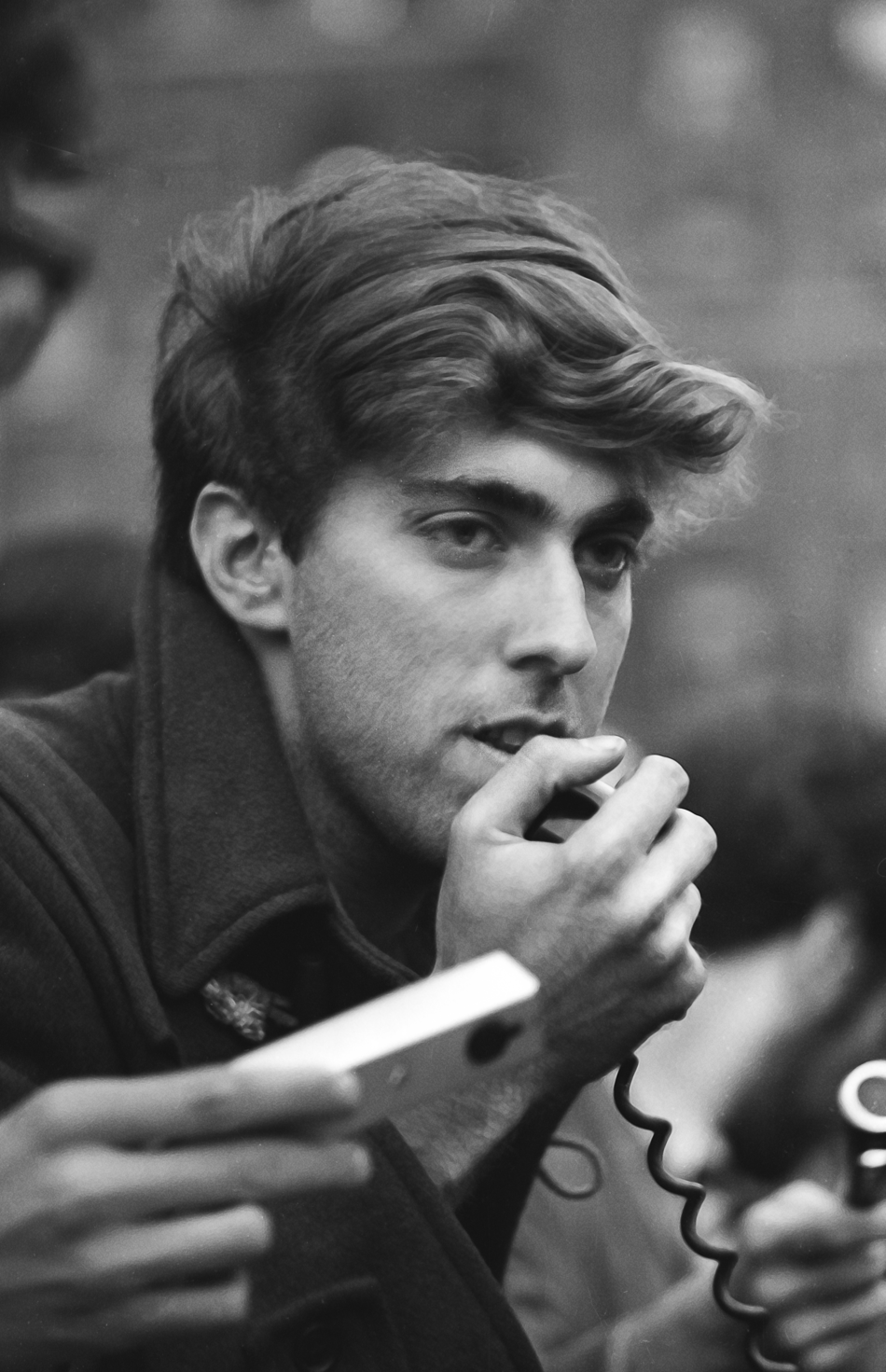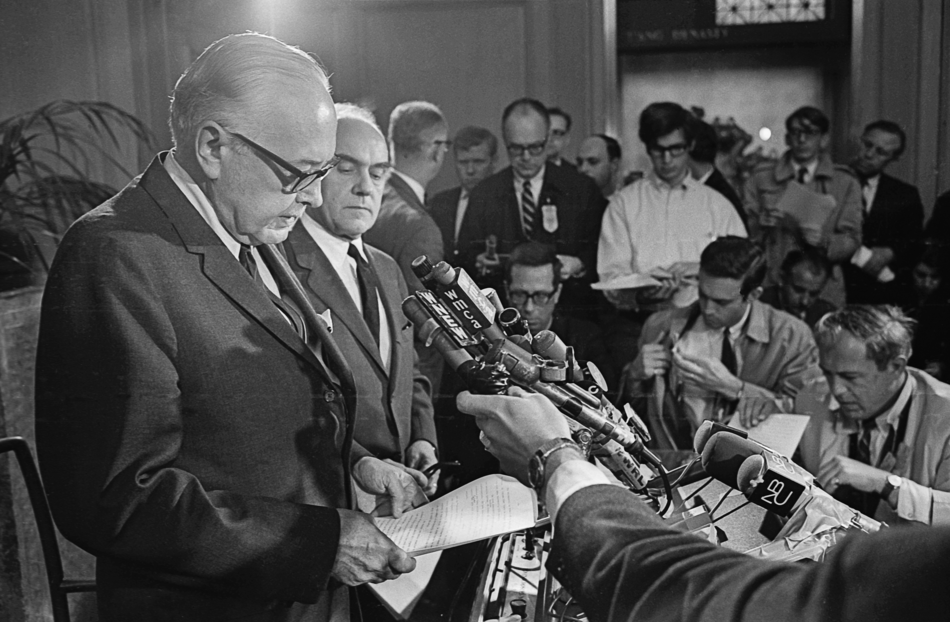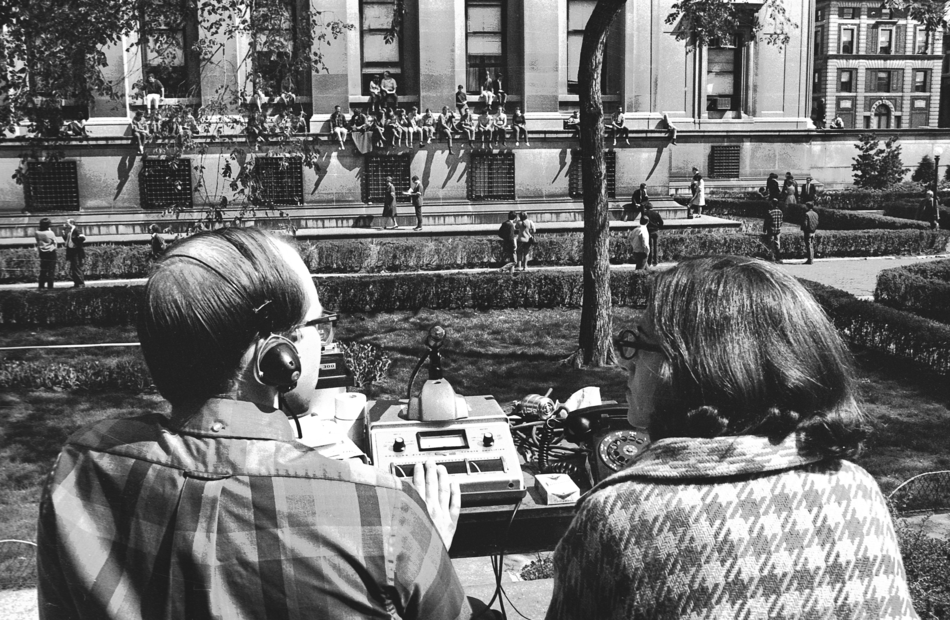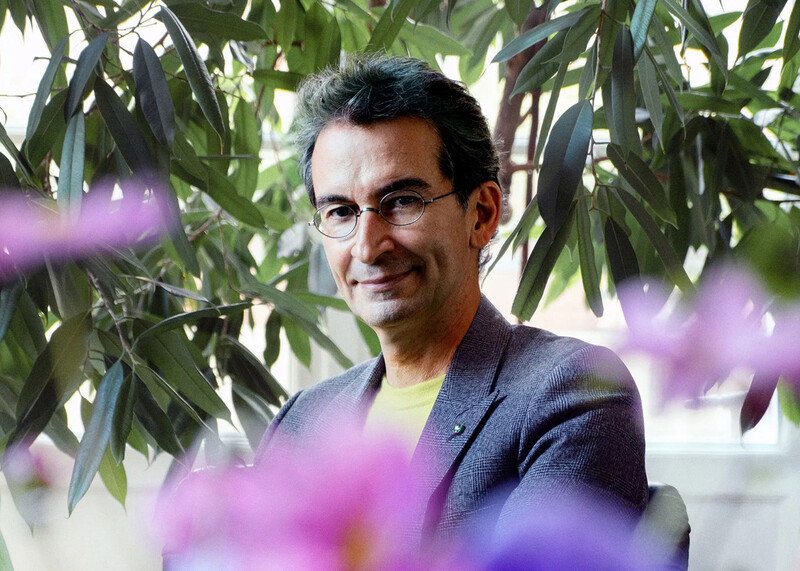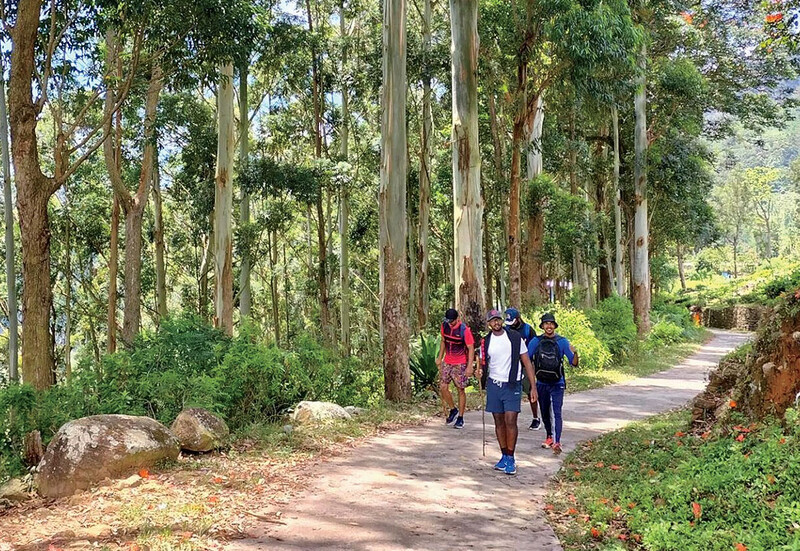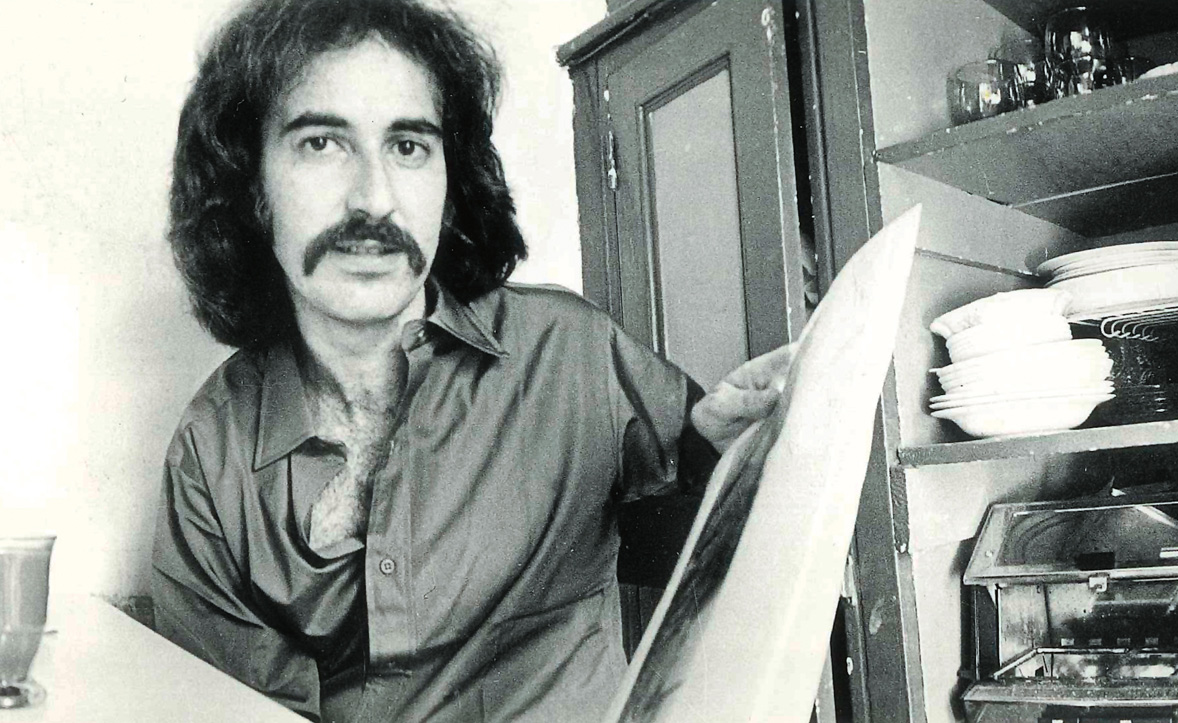
Much as I shy away from the very notion of generational identity, I must own to being a creature of the sixties. Born in 1943, I entered Columbia as an undergraduate in 1960, graduated in 1964, and was influenced unsystematically by that period’s anti-Establishment attitudes. The sixties have been so mocked, caricatured, or flattered by later generations that anyone who lived through that era sometimes seems to have had only two choices: loyal defender or turncoat. What often is missing, which I would like to propose, is a middle path: critiquing our mistakes and misconceptions while remaining sympathetic to the era’s spirit of idealism and experimentation.
“The personal is political” was a slogan back then. I would not go so far as to equate the two, but I would argue that one’s private circumstances do have a bearing on one’s political views. So here are a few personal facts: in my senior year at Columbia, I had gotten married; we had lived abroad for a year and then returned, my wife supporting me while I tried to write a novel. Ultimately, I managed to eke out a tiny living ghostwriting and working for an antipoverty program. By 1968, our marriage was in serious trouble. We had moved from secluded middle-class Inwood, on the upper tip of Manhattan, down to West 103rd Street, a dozen or so blocks south of Columbia, to be closer to the action, and suddenly there was plenty of action. Student protesters had occupied five buildings on campus in April 1968. It seemed worth checking out.
Having graduated four years earlier from Columbia College, I was drawn to the student rebellion for several reasons: (1) opposed as I was to the Vietnam War, I had been participating in marches in New York and Washington, DC, distributing flyers to unsuspecting pedestrians, and generally answering the call; (2) having spent several years in writerly isolation, I was looking for excitement, communal and erotic (file under: “the personal is political”); and (3) I envied the students their fun. The Columbia I had gone to at the beginning of the sixties was a staid, tweedy place. We had aspired or pretended to be sober, mature grownups, and in consequence, I felt I was missing out on my youth. As a latecomer to the bacchanal, I wanted to protest and to party.
I visited the first floor of the student center at Ferris Booth Hall (since torn down), which had been taken over as strike headquarters. Before we could enter, we had to be vetted by somber student guards wearing Che berets. I was immediately struck by the theatrical mise en scène of it, the air of dress-up, a militancy pastiche thrown together from Ho Chi Minh’s North Vietnam, Fidel’s Cuba, and Mao’s China. Card tables carrying pamphlets, posters, radical literature, buttons, and other revolutionary paraphernalia lined the room. The atmosphere was, despite a certain grim determination — the frustrated feelings that something had to be done about the war, that we had to act, not simply stand by — like a street fair.
A few days later, I was given a tour of Fayerweather and Avery, two of the occupied buildings, and I saw the dishabille of sleeping bags and blankets, bookbags, and portable typewriters. It looked like a pajama party, it looked jolly, with the exception of interminable meetings at which everyone who wanted to speak could. Direct democracy notwithstanding, I already had been tipped off that the Students for a Democratic Society (SDS) leaders would manipulate the outcome by holding off votes until early morning, when they could be assured a majority. Still, I was impressed with the practical arrangements being made for daily operations, food delivery, and chores. It did not occur to me to join the occupying students, especially with my apartment’s warm bed close by. It was enough just to have seen the sleep-ins to feel part of history in the making.
Much was made later of the cavalier way the students mistreated university property, smoking the president’s cigars and turning hallowed classrooms into messy dorm pads. Certainly, some hostility was being expressed toward this institution of higher learning; but the occupations also may have signified an affection for the university, or a longing to know it with greater intimacy, by snoozing on its floorboards. I understood this ambivalence, having, on the one hand, fallen in love with Columbia, ever grateful for the fine education it had given me, and on the other hand, put off by its chilly impersonality and clubby exclusions. Despite my high grades, I had been passed over for various fellowships abroad because, as a friendly faculty member clued me in, some professors had disapproved of my less than deferential attitude and found me to be not one of their own. In retrospect, I see they were right: they perceived I wasn’t cut out to be a scholar-academic moving compliantly through the ranks. But at the time, I felt unjustly spurned and resentful enough to share the student activists’ animus.
Those tensions had been brewing for some time. In the early sixties, I had been largely apolitical, as was the campus, but when the administration censored the literary magazine, Columbia Review, I enthusiastically joined the protest. The college was still all-male, and the hottest political issue at the time was whether women should be allowed to visit the dorms. (I was all for it.) The paternalistic, in loco parentis attitude on the part of the university administration rankled deeply. The fact that then-president of Columbia Grayson Kirk ’53HON was known to be resistant to women faculty only intensified our opposition to this patriarchal authority figure. You could never admit aloud that the students’ rebellion was partly oedipal, but you could think it. And so what if it was? I was too young then to put in a word on behalf of fathers.
I don’t recall how I received notice that some graduates were forming an organization in support of the student protests, but I went to the first meeting. Out of it came Alumni for a New Columbia (ALFONECO). We fancied ourselves the progressive, pro-youth alternative to the official, conservative alumni association, which supported President Kirk and the anti-protest students to the hilt. As with many New Left organizations, our members ran the gamut from mildly liberal to revolutionary, a confusion that would have to be sorted out later. For the moment, we were united by goodwill toward the strikers and a desire to support them. My own political position at the time might be best defined as social democratic, more in sympathy with Sweden’s social-welfare state than Maoist China, but I felt guilty about my wishy-washy politics and was open to persuasion by the more militant stance of the SDS radicals who were spearheading the unrest, should historical events move in a more extreme direction.
Tom Hayden, who had helped found SDS in 1962, remembered the chairman of Columbia SDS, Mark Rudd, as “absolutely committed to an impossible yet galvanizing dream: that of transforming the entire student movement, through this particular student revolt, into a successful effort to bring down the system.” It’s hard to credit now the gullible belief that such an overthrow of the government and the whole capitalist system was even in the offing. I remember going during this time to a reading at St. Mark’s Church, and the poet Anne Waldman whispering in my ear: the word on the street is that it’s going down this summer. “It” being the revolution. I very much doubted that but was intrigued that there even existed rumors about the possibility. One day during the strike, I was on an uptown bus going past Columbia toward Harlem and saw sidewalk demonstrators yelling up to the passengers, “Join us! Join us!” From the baffled looks on the faces of my fellow riders, mostly Black, I could tell they had not the slightest idea what they were being asked to join. Ten blocks away from campus and, moreover, throughout the city, the disturbances had caused not a ripple. Yet in my progressive circle, the sentiment was growing that one should “organize,” or at least enlist in a like-minded crew to prepare for a general strike or some sort of insurrection that might break out. And so I joined ALFONECO.
About fifty of us were at that first meeting, mostly in our twenties and early thirties: psychotherapists, medical students, and writers, as well as a smattering of older people, lawyers whose children were among the protesters, and ex-Communist (maybe not “ex”) organizers from the Maritime Union who had come out of the woodwork. Michael Nolan '63CC, a documentary filmmaker for public television, chaired the meeting. I sat in the back, raising various objections, as I would in subsequent meetings. It is a truth universally acknowledged that whoever speaks up and challenges a group with irritating questions eventually will be asked to lead it. That is how I became in short order the president of ALFONECO.
By that time, the students had been evacuated from the buildings by the police, who forcibly dragged them out and pummeled them and many bystanders bloody with nightsticks. I was not a witness to this shameful event, but it became the dividing line in the protests, a scandal that the Kirk administration would never live down and which solidified sympathy for the student radicals (within hours a university-wide strike was called). During the bust, several hundred protesters had been arrested, and ALFONECO quickly got to work, its lawyers filing amici curiae briefs in court and its polemicists (the group was rich in writers) turning out statements for the press about how “shocked and appalled” we were at the university administration’s latest clumsy maneuvers.
President Kirk and Provost–Vice President David Truman both seemed to possess tin ears, granting us much insensitive fodder to work with. We were hoping local newspapers would at least include a line or two from these “shocked and appalled” press releases, in the interest of balanced coverage. We also hoped the stream of press statements would disguise how small we were: I doubt if our membership ever exceeded two hundred on the mailing list. We engaged in public debate with the official alumni organization, men in business suits who deplored what they saw as longhair anarchists spoiling the college experience for more serious students. I went on the Barry Gray radio show and argued with someone from the official alumni group. By this time, I had all the talking points down pat: the university was engaging in military research, ripping off the Harlem community, and so on. It was easy to stay outraged after the police bust. But looking back, I wonder how much I actually accepted the logic of the strike demands.
For instance, one of the chief demands was that the university sever its ties with the Institute for Defense Analyses (IDA). Although Columbia initially had been an institutional sponsor of IDA, the university had no outstanding contracts to do military research at the time of the Columbia protests. Some individual faculty members did have dealings with the government, but the traffic was minimal: IDA served more as a conveniently symbolic focus for student outrage against the Vietnam War than an actual player on campus. Of course, in a larger sense, the university was thoroughly integrated into the “military-industrial complex,” as Columbia’s former president, Dwight D. Eisenhower, had termed it: how could it not be? SDS researchers were busy charting the overlapping elite who sat on the boards of banks, corporations, newspapers, government agencies, and universities. Was this a genuine conspiracy or the logical outgrowth of a corporate society? Even at the time, I was not shocked at the information in these charts. But I had a role to play, knew my lines, and relished the spotlight.
As for the gymnasium that Columbia had wanted to build in nearby Morningside Park, in retrospect it might not have been such a bad thing; the park was a shabby, neglected amenity that could have used some traffic. The bulk of the building would have been allocated to the university, while a smaller section with a separate entrance, occupying some minuscule percentage of square footage, would have served the community. That the entrance to this proposed community facility was located below, in the park, had unfortunate connotations of a tradesmen’s or servants’ entrance, which the protesters fastened upon, although the reason for that arrangement had more to do with topography than racial prejudice. The Harlem community leaders, originally in support of the gym, had grown mistrustful, rightfully suspicious of a Columbia land grab. The university has had a long history as an acquisitive neighbor. Still, the upside was that the community would have gotten much-needed recreational facilities, including a swimming pool. But its elected officials, State Senator Basil Paterson and Assemblyman Charles Rangel ’87HON, had both come out against the gym construction, while firebrand H. Rap Brown had said if it were built it should be torched to the ground. In essence, the strikers’ demand to stop the gym’s construction was largely symbolic, a way for SDS to link the antiwar protest to civil rights and to defer to the Black students who were occupying Hamilton Hall and who themselves were deferring to the Harlem community.
A third demand was amnesty for the six SDS student leaders who had led a march inside Low Memorial Library earlier in the year, in violation of the rule against indoor demonstrations. I had no problem at the time agreeing with this demand, although when I think about it now, I am less certain that self-proclaimed revolutionaries who hope to overthrow the government and in the short term bring their university to a halt should not be prepared to pay the consequences. Under normal circumstances, they might have faced academic suspension for a term. It seems hypocritical to argue that the university is morally bankrupt on the one hand, and to cling to enrollment in said institution on the other. But perhaps not: in armed rebellions, amnesty often is made a precondition to peaceful settlement. Interestingly, the university administration and the faculty were much more willing to compromise on demands involving external matters, such as the IDA and the gym, but the one demand they resisted strenuously was amnesty: they seemed averse to ceding the right to discipline students who had broken their rules.
As it turned out, Columbia, having spent millions on preliminary planning for the gymnasium in Morningside Park, gave it up, severed its formal connection with IDA, and suspended punishment for almost all student infractions. The criminal cases against the arrested students also were dropped. So in that sense, perhaps the demands were shrewdly conceived as practical and achievable, and their having been met in the end constituted a victory for the strike. Conversely, because they were largely symbolic, their accomplishment changed little of substance. The faculty had taken the demands quite seriously, and tried to negotiate on each item to bring about a peaceful resolution, using their (excessive) faith in the powers of reason to avoid a police bust. The student protest leaders did not, I think, take the demands as seriously. Mark Rudd himself later boasted to a reporter that “we [SDS] manufactured the issues. The Institute for Defense Analyses is nothing at Columbia. Just three professors . . . And the gym is bull. It doesn’t mean anything to anybody.” But whether or not the demands were serious, the SDS dug in, refusing to compromise on them, so as to compel exactly the theatrical, bloody denouement that occurred when police ousted the students. It was this very outcome the professors acting as go-betweens had dreaded: some faculty even volunteered to interpose themselves in front of the buildings if the police moved to clear them. In short, the faculty cared more about protecting the students from physical harm than the students themselves did. Youth believes itself immortal; those who have attained middle age know otherwise.
What puzzles me now is why I gave so little thought to the validity of the demands. I seem to have been closer to the militants’ viewpoint, that it was all a pretext to confront the university as a surrogate for the Establishment, so who cared if the demands were manufactured? The point was to show our opposition to the Vietnam War and racial injustice — and to stick it to Columbia.
In my current thinking, I regard the American university as a soft target. Politically engaged students are in school; hence, they commence their political struggle where they are, using the university administration as a convenient though often misplaced opponent. I suppose it could be argued from a Marxist perspective that the university indoctrinates false consciousness, or, as Pierre Bourdieu maintains, that higher education reinforces the rigid hierarchical class structure. But colleges, I can’t help thinking, are not primarily responsible for the ills of society, and to the extent that they provoke critical thinking, they offer a line of resistance. True, my changed perspective may have something to do with having become a faculty member at Columbia, co-opted by the academic mindset and paycheck that lures me to identify more closely with the institution. William Blake wrote, “The tigers of wrath are wiser than the horses of instruction.” I wonder whether I understood this Blakean adage in 1968, and now that I’ve become one of the faculty nags or ponies, have forgotten it. But no, I don’t believe that righteous wrath necessarily trumps every other kind of moral authority.
The corollary to “the personal is political” is that one’s involvements in politics may have a private as well as a public motive. In my case, I seem to have been trying to enact a youth that was fast escaping my grasp. What I did not realize was that it was not only five or so years that separated me from the student rebels. During that historical juncture there had been a sea change: thanks in part to the demographic bulge denoted by the term “baby boom” and in part to the marketing of youth culture, the students felt themselves part of a separate tribe, their age group serving as sufficient identity, one radically different from grownups. By contrast, I and those on my side of the divide had prematurely yearned to be adult; it was too late for us to learn the siren song of youth. I could not dismiss so easily my elders’ hesitations as “bullshit”: if anything, I felt a twinge of pity for and identification with those professors shuttling between the benighted university administration and the recalcitrant students.
The legacy of the ’68 strike was both positive and negative. Václav Havel said that the Columbia student actions emboldened the Czech rebels and inspired dissidents around the world. In France, the May uprising, les événements de mai, took the protest baton and ran it much further, even bringing down the de Gaulle government. It made us giddy to think we were part of a worldwide movement. At Columbia, Grayson Kirk was replaced by ex–United Nations diplomat Andrew Cordier ’69HON. Modest steps began to be taken to increase the diversity and gender balance of the student body, the faculty, and the board of trustees.
On the negative side, another SDS leader, Ted Gold — whom I had heard deliver a humorous, self-deprecating speech at a street-corner rally: the rebel as nebbish — was blown up on March 6, 1970, by a homemade bomb in the West 11th Street townhouse. That such a sweet, gentle guy’s life should end so violently testified to the runaway-train logic of revolutionary militancy. David Gilbert ’66CC, another SDS organizer, was involved in an armed robbery of a Brink’s truck during which two policemen and a security guard were killed. Mark Rudd joined Weatherman, which vowed to overthrow the government by violent or other means; he participated in the “Days of Rage’’ in Chicago; and then he went underground, working at odd jobs. When he came out of hiding decades later, he, practically alone of the Weather Underground veterans, confessed to regrets for making mistakes. He was particularly ashamed of having given the OK to JJ (John Jacobs) during the second occupation of Hamilton Hall to burn manuscripts belonging to Professor Orest Ranum. Had I known of this at the time I would have been horrified.
Most movement stalwarts never second-guessed their more questionable acts. In a 2015 New York Times follow-up article about the “kidnapping” of an NYU computer in 1970 — a computer, by the way, that had nothing to do with military uses — one of the perpetrators, Nicholas Unger, was tracked down and interviewed. “‘What do I say about being part of a generation of protests?’ Mr. Unger said . . . ‘The war was wrong, and people who tried to stop it were doing the right thing.’” It must be good to have such a Manichaean conscience. Still, one must remember that whatever was done, valid or preposterous, emerged out of the frustrated feeling that you had to do something about the war — you just had to act, not simply stand by. And in fact, the cumulative effect of all that protest activity was to help bring an end to the Vietnam War. The feminist activist Ann Snitow has written wisely: “No activism is possible without naiveté, some faith in action in spite of rational assessments of what can actually be done. And, also, no activism without some grandiosity, some earnest belief in the value of making an unseemly display.” I should keep reminding myself of that, as I think back with bemusement to the unseemly if lively posturing, naiveté, and grandiose play-acting in which I and my confederates indulged during that time a half century ago.
Adapted from A Time to Stir: Columbia '68, Edited by Paul Cronin '14JRN. © 2017 Columbia University Press. Used By Arrangement with the Publisher. All Rights Reserved.
